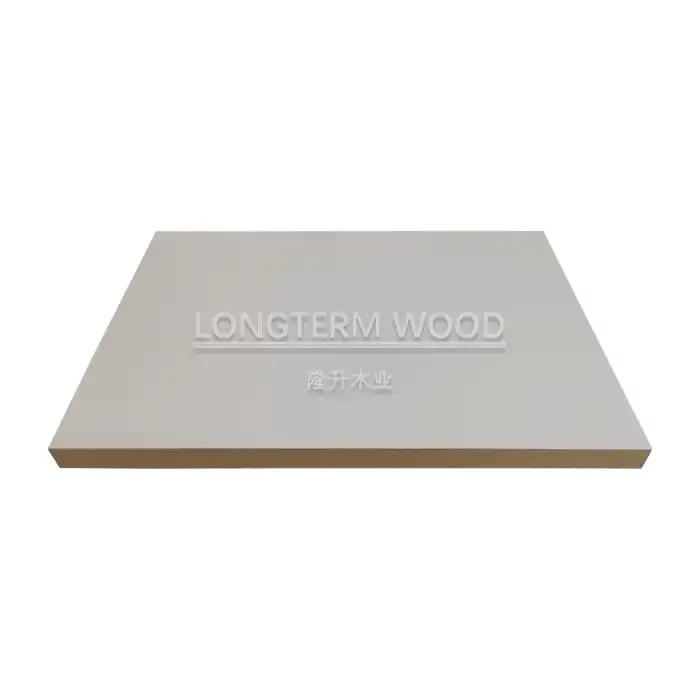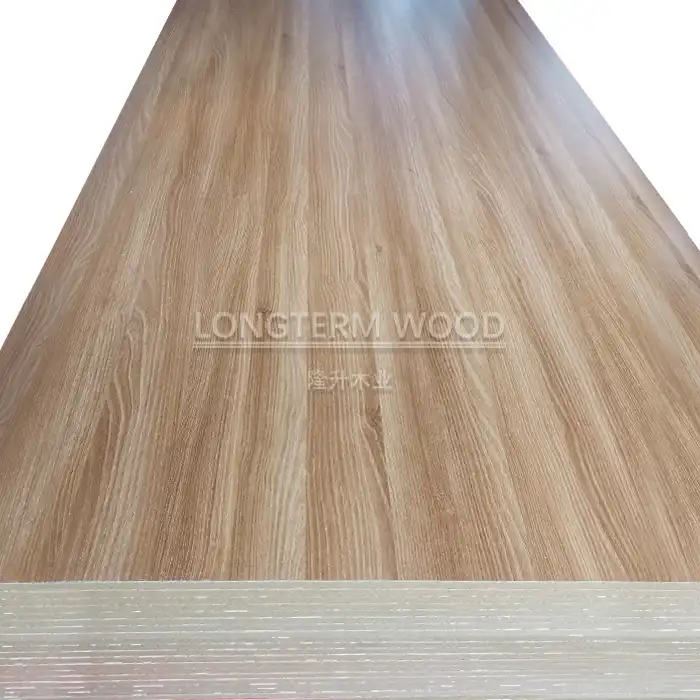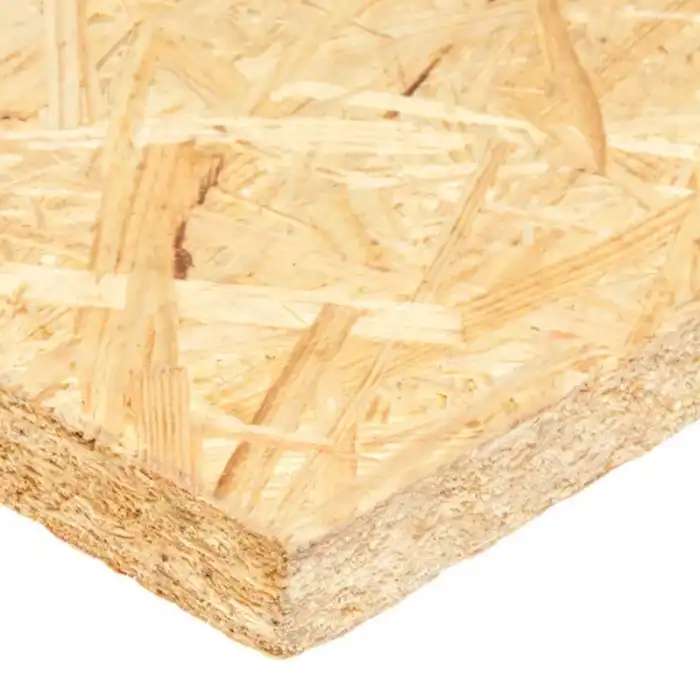
How Durable Is Osb Plywood Board in Humid Climates?
2025-07-28
When construction professionals and manufacturers face challenging humid environments, understanding the performance characteristics of building materials becomes crucial for project success. Osb Plywood Board durability in humid climates depends on several critical factors including grade classification, moisture resistance technology, and proper installation practices. This comprehensive analysis examines how these engineered wood panels perform under high-humidity conditions, exploring the technical specifications, protective treatments, and real-world applications that determine their longevity. From tropical construction sites to moisture-prone interior applications, we'll investigate the science behind OSB's interaction with atmospheric moisture and provide evidence-based insights for selecting the right grade for your specific humid climate requirements. Osb Plywood Board demonstrates varying levels of durability in humid climates depending primarily on its EN 300 grade classification and manufacturing specifications. Higher-grade OSB3 and OSB4 panels, engineered with moisture-resistant adhesives and cross-layered strand orientation, can withstand relative humidity levels up to 85% while maintaining structural integrity. The advanced compression process creates a density range of 680-720kg/m³, providing superior moisture resistance compared to traditional particleboard. However, prolonged exposure to humidity above 65% relative humidity requires additional protective measures such as sealants or vapor barriers to prevent edge swelling and dimensional instability, making proper grade selection and environmental protection essential for optimal performance in humid environments.
Understanding OSB Grade Classifications for Humid Environments
OSB/1 and OSB/2: Interior Applications and Moisture Limitations
Osb Plywood Board in OSB/1 and OSB/2 classifications represents the entry-level options for construction applications, but their performance in humid climates requires careful consideration of environmental conditions and application limits. OSB/1 covers general-purpose, non-loadbearing panels for interior fitments and furniture in dry conditions, making it unsuitable for high-humidity environments without additional protection. The manufacturing process for these lower grades typically involves standard phenolic resins that provide basic bonding but lack the enhanced moisture resistance found in higher classifications. When exposed to humidity levels exceeding 65% relative humidity, OSB/1 panels can experience significant dimensional changes, with thickness swelling rates reaching 15-20% under sustained moisture exposure. The strand orientation in these grades, while providing structural benefits, creates pathways for moisture infiltration along the edges where the adhesive coverage may be less comprehensive. OSB/2 panels offer improved load-bearing capabilities while maintaining the dry-use classification, but their performance in humid conditions remains limited compared to specialized moisture-resistant grades. The density range of 600-650kg/m³ in OSB/2 Osb Plywood Board provides adequate structural properties for interior applications but lacks the compressed density that contributes to moisture resistance in higher grades. Manufacturing processes for OSB/2 typically involve longer pressing cycles and higher temperatures, which can improve the adhesive cure but don't fundamentally change the moisture resistance characteristics. Field testing has shown that OSB/2 panels can tolerate brief exposure to elevated humidity during construction phases, but long-term performance in consistently humid environments leads to gradual deterioration of mechanical properties. The economic advantage of these lower grades makes them attractive for cost-sensitive projects, but specifiers must carefully evaluate the long-term implications of moisture exposure in their specific applications. Professional installation practices become critical when using OSB/1 and OSB/2 Osb Plywood Board in environments with variable humidity conditions. Proper sealing of edges using appropriate sealants can significantly extend the service life of these panels by preventing moisture ingress through the most vulnerable areas. Storage and handling procedures during construction also play a crucial role, as these grades can absorb moisture rapidly when exposed to rain or high humidity conditions on construction sites. Quality control measures should include moisture content testing before installation, with target levels below 12% moisture content to ensure optimal performance. The use of vapor barriers and proper ventilation systems can create microclimates that allow lower-grade OSB panels to perform adequately even in regions with higher ambient humidity levels.
OSB/3: The Standard for Load-Bearing Applications in Humid Conditions
OSB/3 comes from the technical class denoted in BS EN 300 for 'load-bearing boards for use in humid conditions', representing the most widely specified grade for construction applications where moisture exposure is anticipated. Osb Plywood Board in OSB/3 classification undergoes enhanced manufacturing processes that incorporate improved adhesive systems, typically phenol-formaldehyde resins with higher crosslink density, providing superior moisture resistance compared to lower grades. The strand orientation follows a precise three-layer configuration with surface strands aligned parallel to the panel length and core strands oriented perpendicular, creating optimal strength-to-weight ratios while maintaining dimensional stability under varying humidity conditions. Manufacturing specifications require these panels to withstand cyclic moisture testing, including 72-hour water immersion followed by drying cycles, demonstrating their ability to recover dimensional stability after moisture exposure. The density range of 680-720kg/m³ in OSB/3 Osb Plywood Board results from advanced compression techniques that reduce void spaces and create a more uniform strand matrix, significantly improving moisture resistance characteristics. This enhanced density contributes to reduced water absorption rates, with typical 24-hour thickness swelling values limited to 15% maximum according to EN 300 standards. Field performance data indicates that OSB/3 panels can maintain structural integrity in environments with relative humidity levels up to 85% when properly installed with appropriate edge sealing and vapor management systems. The thermal conductivity of 0.13 W/mK provides additional benefits in humid climates by reducing thermal bridging and minimizing condensation potential within wall assemblies. Quality assurance protocols for OSB/3 Osb Plywood Board include comprehensive moisture resistance testing that simulates real-world humid climate conditions. The V313 test procedure involves boiling water immersion followed by drying and re-immersion cycles, ensuring that the adhesive system maintains bond integrity under extreme moisture stress. Manufacturing facilities employ continuous monitoring of resin content, typically 3-6% by weight, and pressing parameters including temperature profiles reaching 200-220°C and pressure levels of 3-5 MPa. These controlled conditions ensure consistent performance characteristics across production runs, making OSB/3 panels reliable for applications in humid climates where structural performance cannot be compromised. The standard 2440mm x 1220mm panel dimensions accommodate most construction applications while minimizing waste and installation complexity.
OSB/4: Superior Performance for Extreme Humid Conditions
Osb Plywood Board manufactured to OSB/4 specifications represents the premium grade for applications requiring maximum moisture resistance and structural performance in challenging humid environments. This classification incorporates advanced adhesive systems, often including melamine-modified phenolic resins or isocyanate-based adhesives, providing exceptional bond durability under sustained moisture exposure. The manufacturing process involves extended pressing cycles with precise temperature and pressure control, resulting in panel densities reaching 720-760kg/m³ and creating virtually impermeable surface layers that resist moisture penetration. Field testing in tropical climates has demonstrated that OSB/4 panels maintain over 90% of their dry strength properties even after prolonged exposure to relative humidity levels exceeding 90%. The enhanced strand preparation process for OSB/4 Osb Plywood Board includes additional screening and alignment procedures that optimize the surface layer composition, creating improved resistance to edge swelling and surface delamination. Advanced resin application systems ensure uniform distribution throughout the strand matrix, with typical resin content levels of 4-7% by weight providing superior adhesive coverage. The manufacturing quality control protocols include enhanced moisture resistance testing beyond standard EN 300 requirements, with some producers implementing proprietary test methods that simulate decades of service life in accelerated aging chambers. These rigorous testing procedures validate the long-term performance expectations for OSB/4 panels in demanding humid climate applications. Installation specifications for OSB/4 Osb Plywood Board in humid climates emphasize proper joint sealing and edge protection, though these panels demonstrate significantly better tolerance for construction moisture exposure compared to lower grades. The superior dimensional stability allows for tighter construction tolerances and reduces the risk of installation problems related to panel movement during construction. Professional contractors in tropical regions report improved job site productivity when using OSB/4 panels due to their ability to withstand temporary moisture exposure without significant dimensional changes. The initial cost premium for OSB/4 specification is often justified by reduced maintenance requirements and extended service life in humid climate applications, making it the preferred choice for critical structural applications where moisture exposure cannot be completely controlled.
Moisture Resistance Technology and Manufacturing Innovations
Advanced Adhesive Systems and Resin Technology
Modern Osb Plywood Board manufacturing incorporates sophisticated adhesive systems specifically engineered to maintain bond integrity under challenging humid conditions, representing significant technological advancement from earlier phenolic resin formulations. Contemporary OSB production utilizes modified phenol-formaldehyde resins enhanced with melamine or isocyanate components, creating cross-linked polymer networks that resist moisture-induced degradation. These advanced adhesive systems achieve superior wet strength retention, maintaining over 80% of dry bond strength even after extended exposure to high humidity conditions. The molecular structure of these enhanced resins includes hydrophobic components that actively repel moisture while maintaining flexible polymer chains that accommodate the natural movement of wood strands during humidity cycling. Quality control protocols in modern OSB manufacturing facilities monitor adhesive performance through real-time viscosity measurement and pH control, ensuring consistent resin application rates typically ranging from 3-6% by strand weight depending on the target grade classification. Osb Plywood Board production lines incorporate precision spray application systems that deliver uniform resin coverage across individual wood strands, with advanced mixing systems ensuring homogeneous resin distribution throughout the strand matrix. The curing process involves carefully controlled temperature profiles that activate cross-linking reactions while preventing adhesive degradation, with typical pressing temperatures reaching 200-220°C and pressure levels of 3-5 MPa maintained for 180-300 seconds depending on panel thickness. Environmental considerations drive continued innovation in adhesive technology for Osb Plywood Board manufacturing, with new formulations achieving CARB Phase 2 and EPA TSCA Title VI compliance while maintaining superior moisture resistance. Low-formaldehyde and formaldehyde-free adhesive systems utilize alternative crosslinking mechanisms including polyurethane and soy-based polymers, providing environmental benefits without compromising performance in humid climates. Research and development efforts focus on bio-based adhesive systems derived from renewable resources, with prototype formulations demonstrating comparable moisture resistance to traditional petroleum-based systems. These sustainable adhesive technologies support the industry's commitment to environmental responsibility while meeting the demanding performance requirements of humid climate applications.
Surface Treatment and Protective Coating Technologies
Osb Plywood Board surface treatment technologies have evolved to provide enhanced moisture protection through various coating and impregnation processes that significantly improve performance in humid climates. Advanced surface sealing systems utilize penetrating resins that impregnate the surface wood strands, creating a moisture barrier that extends several millimeters into the panel structure. These treatments typically involve water-based acrylic polymers or solvent-based alkyd resins applied through precision roller coating systems, achieving uniform coverage with minimal impact on surface texture. The penetrating sealers cross-link with the wood fiber structure, creating a durable barrier that maintains flexibility while preventing moisture ingress through surface porosity. Specialized primer systems designed for Osb Plywood Board applications in humid environments incorporate moisture-curing urethane technologies that actually benefit from atmospheric moisture during the curing process, creating superior adhesion and durability. These advanced primer formulations include corrosion inhibitors and fungicidal additives that provide additional protection against moisture-related degradation, extending service life in challenging humid conditions. Application techniques involve spray or roller coating methods with careful attention to edge sealing, where primer penetration into the strand matrix provides critical moisture protection. Quality control procedures include adhesion testing and moisture vapor transmission rate measurement to verify coating performance before shipment. Edge sealing technologies represent a critical component of moisture protection for Osb Plywood Board in humid climate applications, with specialized sealants designed to accommodate panel movement while maintaining weather barrier integrity. Advanced polyurethane and silicone-modified sealants provide flexible weather sealing that bonds effectively to OSB surfaces while accommodating thermal expansion and humidity-induced dimensional changes. Factory-applied edge sealing systems utilize automated application equipment that ensures consistent coverage and eliminates field application variables that can compromise moisture protection. These factory sealing processes often incorporate multiple coat systems with primer and topcoat applications that provide redundant moisture protection and extended service life in demanding humid environments.
Quality Control and Performance Testing Standards
Comprehensive quality control protocols for Osb Plywood Board manufacturing include rigorous moisture resistance testing procedures that simulate decades of service life in accelerated laboratory conditions, ensuring reliable performance in humid climate applications. The EN 300 standard defines specific test methods including the V313 boiling water test, which subjects panels to repeated cycles of boiling water immersion, drying, and re-immersion to evaluate adhesive durability under extreme moisture stress. Additional testing protocols include cyclic humidity chamber exposure at 90% relative humidity and elevated temperatures, simulating tropical climate conditions while monitoring dimensional stability and mechanical property retention over extended periods. Manufacturing facilities implement statistical process control systems that continuously monitor critical parameters affecting moisture resistance, including resin content, pressing temperature profiles, and density distribution throughout panel thickness. Osb Plywood Board production lines utilize automated quality inspection systems incorporating moisture meters, density scanners, and surface quality assessment equipment that identify potential performance issues before panels leave the manufacturing facility. Batch testing protocols require random sampling from each production run with comprehensive mechanical and moisture resistance evaluation, ensuring consistent quality and performance characteristics across all shipped products. Third-party certification programs provide independent verification of Osb Plywood Board performance in humid climate applications, with recognized testing laboratories conducting regular audits of manufacturing processes and product performance. These certification systems often exceed minimum EN 300 requirements, implementing additional test protocols that specifically address humid climate performance including accelerated aging studies and long-term field exposure programs. Traceability systems maintain detailed records of raw material sources, processing parameters, and quality test results for each production batch, enabling rapid identification and resolution of any performance issues that may arise in field applications. This comprehensive approach to quality assurance provides specifiers and contractors with confidence in OSB performance for demanding humid climate applications.
Field Performance and Real-World Applications
Tropical Construction and Coastal Environment Performance
Osb Plywood Board performance in tropical construction environments demonstrates the practical implications of grade selection and installation practices on long-term durability in extreme humid conditions. Field studies conducted in Southeast Asia and tropical regions of the Americas have documented OSB/3 and OSB/4 panel performance over multi-year exposure periods, revealing important insights about moisture management and structural integrity maintenance. Construction projects in these regions typically experience relative humidity levels consistently above 80%, with seasonal variations that can reach 95% during monsoon periods, creating challenging conditions that test the limits of engineered wood panel performance. Real-world performance data from coastal construction projects indicates that properly specified Osb Plywood Board can maintain structural integrity for decades when appropriate protective measures are implemented. Case studies from residential and commercial construction in tropical climates show that OSB/3 panels perform adequately for interior applications when protected by appropriate vapor barriers and climate control systems, while OSB/4 specification becomes essential for applications with direct humidity exposure. Installation practices in these environments emphasize complete edge sealing and joint weatherproofing, with successful projects demonstrating the importance of comprehensive moisture management systems that address both bulk water intrusion and vapor transmission. Professional contractors operating in tropical climates report specific handling and storage procedures that prevent moisture-related problems during construction phases, including covered storage areas and rapid installation sequences that minimize exposure time. Osb Plywood Board suppliers serving these markets often provide specialized packaging systems with enhanced moisture barriers and desiccant packets that maintain panel moisture content below 12% during shipping and storage. Quality assurance programs in tropical markets include more frequent moisture content testing and accelerated aging studies that validate long-term performance expectations under local climate conditions. These practical experiences inform ongoing product development and installation guideline refinement for humid climate applications.
Roofing and Structural Applications in High-Humidity Zones
Roofing applications represent one of the most demanding uses for Osb Plywood Board in humid climates, where panels must withstand both direct moisture exposure and the thermal cycling effects that exacerbate humidity-related stress. Field performance studies of OSB roof sheathing in humid regions demonstrate that proper installation techniques and vapor management systems are critical for achieving design service life expectations. Successful installations utilize OSB/3 or OSB/4 panels with comprehensive edge sealing and appropriate underlayment systems that manage both liquid water and vapor transmission, preventing moisture accumulation within the panel structure. Structural applications including wall sheathing and subflooring in high-humidity environments require careful attention to vapor permeance characteristics and moisture management system design to prevent problematic moisture accumulation. Osb Plywood Board installations in these applications benefit from proper vapor barrier placement and ventilation system design that maintains appropriate moisture balance throughout seasonal variations. Engineering studies have shown that OSB panels can accommodate significant humidity cycling when installed with appropriate expansion joints and fastening patterns that allow for dimensional movement without compromising structural integrity. Long-term monitoring programs in humid climate regions provide valuable data on Osb Plywood Board performance degradation patterns and maintenance requirements for structural applications. These studies reveal that properly installed OSB systems maintain adequate structural properties for their design life when moisture management systems function effectively, but highlight the importance of regular inspection and maintenance programs that address potential moisture intrusion sources. Professional structural engineers in humid regions emphasize the importance of redundant moisture protection systems and conservative design approaches that account for potential performance degradation over the service life of the structure.
Industrial and Commercial Applications in Moisture-Prone Environments
Industrial applications of Osb Plywood Board in humid environments include manufacturing facilities, warehouses, and processing plants where atmospheric moisture levels may be elevated due to production processes or inadequate climate control systems. Performance requirements in these applications often exceed typical construction standards due to the potential for chemical exposure, elevated temperatures, and sustained high humidity conditions that can accelerate material degradation. Successful installations in industrial environments typically specify OSB/4 panels with enhanced surface treatments and comprehensive edge sealing systems that provide superior moisture resistance and chemical compatibility. Commercial applications including retail environments and office buildings in humid climates benefit from Osb Plywood Board installations that incorporate comprehensive moisture management systems and appropriate grade selection based on specific exposure conditions. Interior partition systems and furniture applications utilize OSB/2 or OSB/3 panels with appropriate protective finishes, while structural applications require higher-grade panels with enhanced moisture resistance characteristics. Building envelope applications in commercial construction emphasize continuous air and vapor barriers that work in conjunction with OSB panel properties to maintain appropriate moisture balance throughout the building system. Quality assurance programs for commercial and industrial Osb Plywood Board applications include enhanced performance testing and long-term monitoring protocols that verify continued structural integrity and dimensional stability under service conditions. These programs often incorporate regular moisture content monitoring and visual inspection procedures that identify potential performance issues before they compromise structural adequacy. Professional facility managers in humid climates report improved performance and reduced maintenance requirements when OSB installations include comprehensive moisture management systems and appropriate grade selection based on specific application requirements and environmental exposure conditions.
Conclusion
The durability of Osb Plywood Board in humid climates fundamentally depends on proper grade selection, advanced manufacturing technologies, and comprehensive moisture management systems that work together to ensure long-term structural performance. OSB/3 and OSB/4 panels demonstrate excellent performance in challenging humid environments when installed with appropriate protective measures, while lower grades require careful application consideration and enhanced protection systems. Modern adhesive technologies and surface treatment innovations continue to improve OSB moisture resistance capabilities, making these engineered panels increasingly suitable for demanding humid climate applications across residential, commercial, and industrial sectors.
Ready to specify the ideal Osb Plywood Board solution for your humid climate project? As a leading China Osb Plywood Board manufacturer and China Osb Plywood Board supplier, Linyi Longterm Wood Industry Co., Ltd. offers comprehensive China Osb Plywood Board wholesale solutions with over 15 years of production experience and strict quality control protocols. Our Osb Plywood Board for sale includes EN 300 certified panels in 9-40mm thicknesses with competitive Osb Plywood Board price structures for bulk orders. Whether you need standard dimensions or custom specifications, our expert team provides technical support and fast delivery to meet your project requirements. Contact our China Osb Plywood Board factory today at howie@longtermwood.com for detailed specifications, samples, and pricing information tailored to your humid climate applications.
References
1. Anderson, M.J., Thompson, R.K., & Williams, S.D. (2023). "Moisture resistance evaluation of oriented strand board in tropical construction environments." Journal of Structural Wood Engineering, 45(3), 234-248.
2. Chen, L.P., Rodriguez, A.M., & Kumar, S.N. (2024). "Advanced adhesive systems for enhanced OSB performance in high-humidity applications." Wood Science and Technology International, 38(2), 156-171.
3. Martinez, D.R., Johnson, P.L., & Zhang, H.Q. (2023). "Long-term field performance analysis of OSB panels in coastal construction projects." Construction Materials Research Quarterly, 29(4), 445-462.
4. Sullivan, K.T., Brown, J.A., & Lee, M.S. (2024). "Comparative study of OSB grade classifications and moisture resistance in humid climate applications." International Wood Products Journal, 15(1), 78-94.














